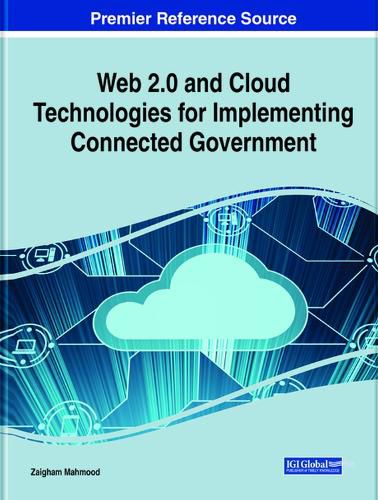Readings Newsletter
Become a Readings Member to make your shopping experience even easier.
Sign in or sign up for free!
You’re not far away from qualifying for FREE standard shipping within Australia
You’ve qualified for FREE standard shipping within Australia
The cart is loading…






This title is printed to order. This book may have been self-published. If so, we cannot guarantee the quality of the content. In the main most books will have gone through the editing process however some may not. We therefore suggest that you be aware of this before ordering this book. If in doubt check either the author or publisher’s details as we are unable to accept any returns unless they are faulty. Please contact us if you have any questions.
The emergence of cloud computing, internet of things, mobile technologies, and social networking have created better-connected members of the public who are digitally linked with each other in real time. Establishing this two-way interaction between citizens and governments has thus become attractive and an expected feature of governments worldwide. Previously, federal and local governments relied on first-generation technologies to provide basic levels of automation and digitization. Now, because of their desire to become more open, transparent, accountable, and connected, newer technologies including cloud computing, mobile networking, big data analytics, Web 2.0, and social media must be developed and utilized.
Web 2.0 and Cloud Technologies for Implementing Connected Government is an essential reference source that presents various dimensions of connected government and connected e-governance visions as well as the latest emerging technologies. Offering development methodologies, practical examples, best practices, case studies, and the latest research, this book covers new strategies for implementing better-connected government models and the technologies that serve to establish these frameworks, including in-depth examinations of mobile technologies, automation, business intelligence, etc. as well as the various ethical and security issues surrounding the use and protection of data. This book is essential for federal, state, and local government officials; policymakers; civil servants; IT specialists; security analysts; academicians; researchers; and students.
$9.00 standard shipping within Australia
FREE standard shipping within Australia for orders over $100.00
Express & International shipping calculated at checkout
This title is printed to order. This book may have been self-published. If so, we cannot guarantee the quality of the content. In the main most books will have gone through the editing process however some may not. We therefore suggest that you be aware of this before ordering this book. If in doubt check either the author or publisher’s details as we are unable to accept any returns unless they are faulty. Please contact us if you have any questions.
The emergence of cloud computing, internet of things, mobile technologies, and social networking have created better-connected members of the public who are digitally linked with each other in real time. Establishing this two-way interaction between citizens and governments has thus become attractive and an expected feature of governments worldwide. Previously, federal and local governments relied on first-generation technologies to provide basic levels of automation and digitization. Now, because of their desire to become more open, transparent, accountable, and connected, newer technologies including cloud computing, mobile networking, big data analytics, Web 2.0, and social media must be developed and utilized.
Web 2.0 and Cloud Technologies for Implementing Connected Government is an essential reference source that presents various dimensions of connected government and connected e-governance visions as well as the latest emerging technologies. Offering development methodologies, practical examples, best practices, case studies, and the latest research, this book covers new strategies for implementing better-connected government models and the technologies that serve to establish these frameworks, including in-depth examinations of mobile technologies, automation, business intelligence, etc. as well as the various ethical and security issues surrounding the use and protection of data. This book is essential for federal, state, and local government officials; policymakers; civil servants; IT specialists; security analysts; academicians; researchers; and students.